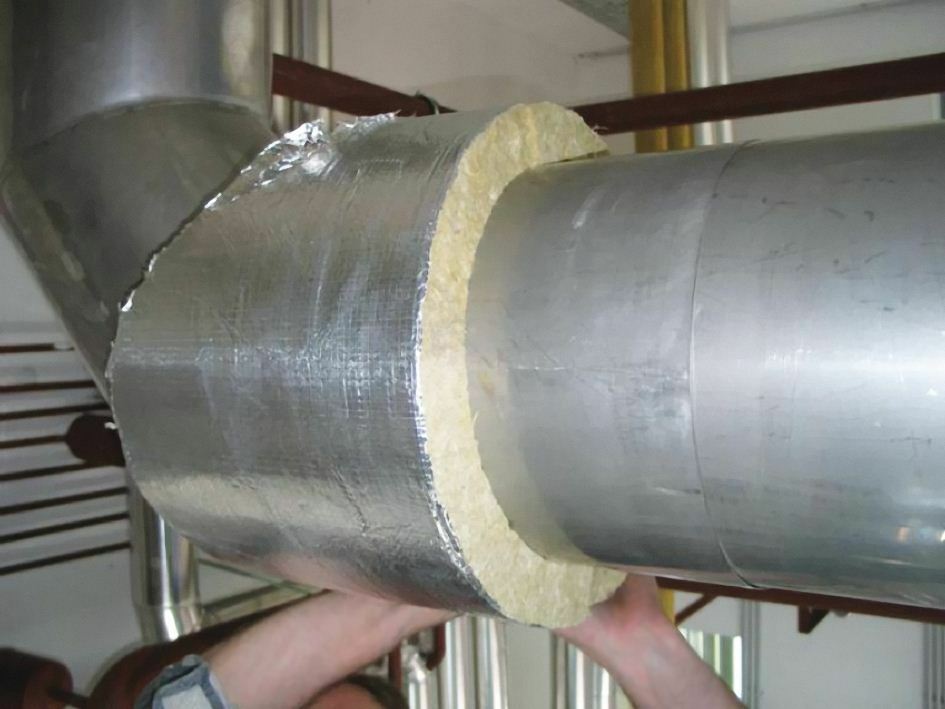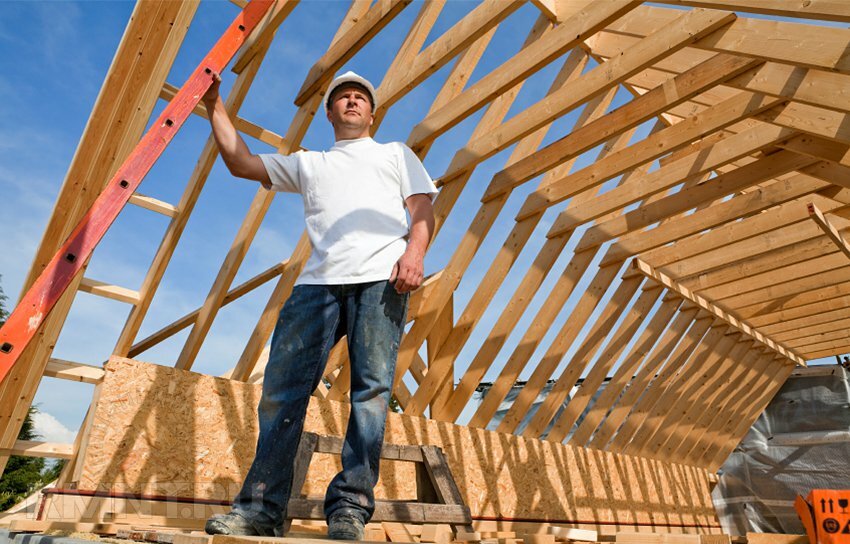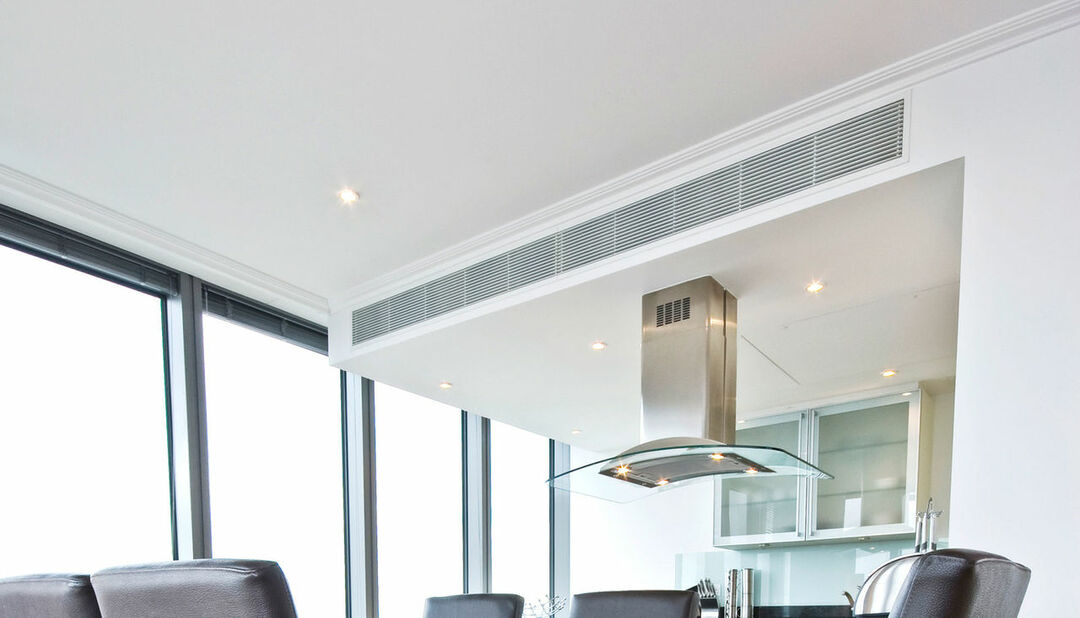Each living space must be equipped with a ventilation system, otherwise the owners will be faced with mold, mildew, dustiness and dampness. The microclimate in the house is far from optimal, and with high humidity, finishing, building structures and furniture will quickly become unusable.
Is the budget so small that you cannot afford to hire employees? A good solution would be plastic pipe ventilation in a private house - affordable and efficient. The main thing is that it is not difficult to build air ducts out of them with your own hands.
We will tell you how to organize ventilation from polymer pipes. Let's acquaint with their advantages, disadvantages, with the installation rules. Our recommendations will help you assemble a flawlessly functioning system and operate it correctly.
The content of the article:
- Advantages and disadvantages in comparison
- Comparison of section sizes
- Priority air exchange volume
- Recommendations for the arrangement of the system
- Natural and artificial type
-
System construction process
- Design or development of a circuit
- Detailing and assembly of the system
- Analysis of rumors and conjectures
- Conclusions and useful video on the topic
Advantages and disadvantages in comparison
There are no prohibitions on the use of plastic or other products used in sewer systems in the construction of a ventilation pipeline. However, before planning and installing ventilation, you should definitely understand the characteristics of the material chosen for the construction.
It is good if their advantages over metal boxes and, of course, disadvantages are known.
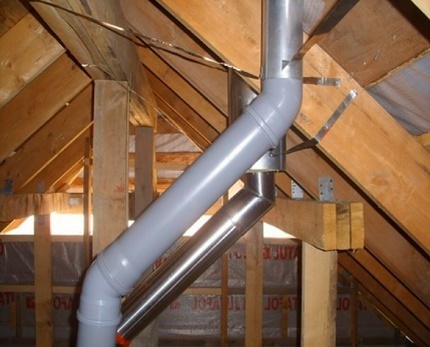
Ventilation is a system of air ducts, vents and equipment, the combination of which provides a regular exchange of exhaust air with fresh
The advantages of plastic sewer pipes used in the arrangement of budget ventilation include:
- Low cost. PVC or PP pipe is several times cheaper than a galvanized tin analog.
- Ease of installation. To establish communication, the owner does not need to involve specialists - everything can be done by hand.
- Practicality. A variety of plastic parts allows you to create ventilation systems of any functionality.
- Electrical insulation. Plastic cannot become a conductor of electric current.
- Structural rigidity. Pipes made of PVC and PP do not need additional fastening, they perfectly hold the structural direction and shape without additional devices.
A weighty plus plastic sewer pipesb is excellent resistance to biological and chemical influences. Mold colonies do not settle on their walls; they cannot be damaged with a household chemical during cleaning.

The indisputable priority of plastic pipes for their use in ventilation systems is the ability to absorb and not propagate sound waves. The system built from them makes much less noise than a metal one.
If we compare sewer plastic with specialized products, it clearly has disadvantages, these are:
- Poor resistance to high temperatures. The sewer pipe cannot be used at air temperatures above 50-60 degrees.
- Insufficiently high strength. In comparison with metal, plastic does not differ in reliability, durability and resistance to negative external mechanical influences. If you try, it can be damaged by a strong blow with a sharp object.
- Limited mounting options. Plastic pipes cannot be laid next to heat generating units (boilers, heaters, stoves, water heaters, radiators and heating pipelines). They should not be placed in areas freely illuminated by the sun.
A ventilation system can be built from plastic sewer pipes. It will actually be as durable and stable as metal. In addition, it does not transport any aggressive medium, and it does not experience pressure.
That is why PP and PVC pipes can be used almost everywhere: in the construction of fire systems ventilation, extractor hoods over hobs, hidden air ducts laid behind false ceilings and walls.

Plastic air ducts are noticeably lighter than their metal counterparts. They are ideal for installation behind suspended and stretch ceilings, behind false walls
A wide range of clips and brackets is produced for attaching polymer pipes to structures. Ceiling hanging can be done with a metal mounting tape. Brackets for metal systems of similar shape and size are also very useful.
Comparison of section sizes
Plastic air ducts, ventilation equipment (fans and diffusers), connecting
and fixing sewer products have the following diameters:
- 100 mm;
- 125 mm;
- 150 mm;
- 200 mm.
There are also less common sizes plastic pipesdesigned for ventilation systems.
PVC sewer pipes, as well as fittings, have their own standard diameters, mm:
- 110;
- 160;
- 200.
Comparing the parameters provided above, there is a noticeable discrepancy with the standard dimensions of the ducts. When assembling a natural ventilation system from the components of a sewer system of appropriate dimensions, there will be no problems.
When docking with an existing ventilation channel, discrepancies appear. It will not work to buy an adapter - they do not exist, and making it yourself in artisanal conditions is long and difficult.
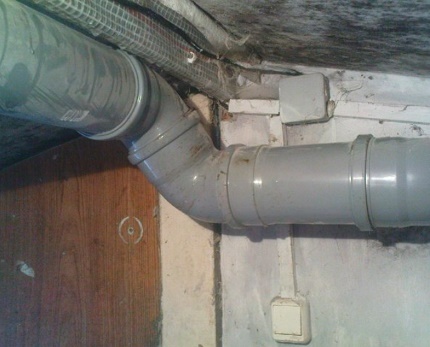
The assembly of air ducts from sewer pipes will greatly facilitate and accelerate the availability of fittings. With their help, you can build a system with any number of turns, although it is desirable to reduce them.
Difficulties may arise when selecting fans and other equipment for arranging a forced ventilation system from sewer plastic pipes. All equipment has standard dimensions and, of course, will not fit in diameter.
Priority air exchange volume
Normative documents are intended to determine the parameters of natural air circulation. For living quarters with an area of 30 m2 air exchange should be 4.5 m3 air for 1 m2. With a larger volume of the room, 30 m is required for each person3 fresh air per hour.
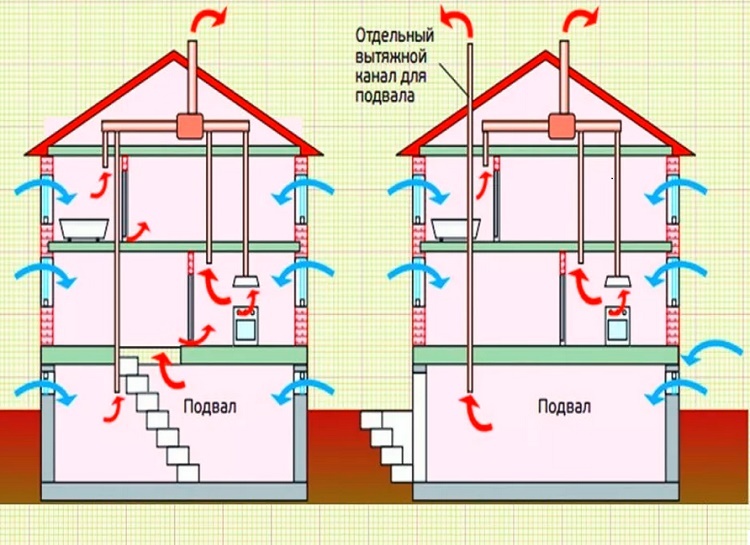
According to the laws of gravity, warm air, saturated with the vapor of our breath and other household vapors, moves upward. This property is taken into account when designing the system. Supply components are located below the exhaust
In the kitchen and bathroom, the indicator should be within 110-140 m3/ч. For forced ventilation, the values will be higher.
Plastic pipes with a diameter of 160 mm are excellent for arranging ventilation in your home. This parameter provides an air flow of about 30 cubic meters per 1 hour at a duct height of 3 meters. With other indicators, the efficiency will be less.
If you need to increase the throughput, you can increase the cross-section of the duct and its length. To ensure maximum draft in each room, the same duct length should be on the same floor.
Recommendations for the arrangement of the system
The normal operation of the system under construction and the thoughtful purchase of material for its assembly should be preceded by a well-made project.
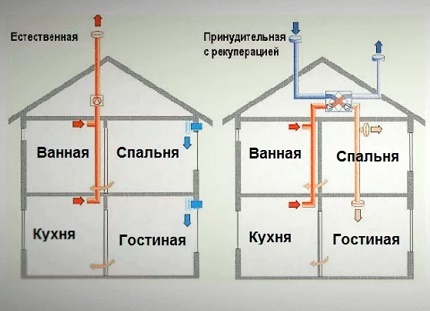
Even at the design stage, it is necessary to decide whether the equipment will be included in the ventilation scheme that stimulates its movement, cleans and warms up the flow from the street.
In order for the result to meet expectations, and the system to cope with the responsibilities, you need to consider the following:
- When designing your project, try to reduce the number of sharp turns and bends in the ventilation duct. The smoother the ventilation channel, the more intense the air circulation.
- The following follows directly from the previous recommendation. The shorter the air path from entry to exit, the more efficient ventilation will be.
- When thinking about and creating a project, adhere to uncomplicated and simple schemes. Convenience in layout will lead to a decrease in efficiency.
When constructing a ventilation system from plastic pipes, pay attention to the height of the structure itself. If the air exhaust pipe rises to a height of less than 5 meters from the lower level, then natural ventilation will not work. In this case, it will have to be reinforced with fans.
Natural and artificial type
By the type of motivation for the movement of air masses, ventilation systems are divided into natural and artificial:
- Natural, they are gravitational. They act due to the difference in density and temperature of the air mass outside the window and inside the premises. Waste warm air with a lower density rushes upward and is drawn into vents, to be replaced by a denser cold stream from behind the window.
- Artificial, they are mechanical. They work by continuously stimulating the movement of the air flow by fans. They are installed on the exhaust or on the inflow, it happens that they are installed in both the supply and exhaust components, but only one direction is always involved.
The gravitational type of ventilation directly depends on the weather conditions. In the summer heat, its work spontaneously stops, because the pressure between the air inside and outside is equalized. It happens that the air flow in the heat occurs in the opposite direction: from the house / apartment to the street.

Natural ventilation is non-volatile. There are no expensive devices in her scheme. It is cheaper to assemble and maintain, but is inferior to the forced one in terms of capabilities and efficiency.
The intake of fresh air according to a natural pattern occurs through leaks in window and door openings with boxes, through open vents and periodically opened doors. Outflow - through barred ventilation holes arranged in kitchens and bathrooms.
Apartments in the old housing stock were ventilated according to a natural scheme. Nobody was going to mechanize it. Now in these apartments, designed for a natural inflow, they are installing plastic sealed windows. Because of them, the normal movement of air is disrupted, therefore, together with a plastic window in a high-rise building, it should be installed supply wall valve.
Supply or exhaust valves in the wall should be used in private houses in which the construction of mechanical supply and exhaust ventilation is not planned.
With the help of the valve, the inflow or outflow will be provided in the cheapest but most effective way. In this case, the entire system will receive the status of combined - i.e. partially mechanized.

The simplest options for combined ventilation systems, partially mechanized by local fans, include systems with supply or exhaust valves, as well as kitchen hoods without recirculation connected to a ventilation shaft duct
Mechanical ventilation is the most expensive and difficult type of system to implement, requiring the inclusion of a recuperator or air heater, air handling unit. Air ducts are laid behind false walls, suspended or suspended ceilings, laid out in building structures during the construction of a house.
Naturally, if the owner decides on a supply and exhaust ventilation device, he will not save on material for ventilation ducts. He's unlikely to buy sewer pipes. It is better to purchase plastic air ducts that can be connected to ventilation equipment without problems and extra tricks.

The unit located in the attic of the house is responsible for the operation of the supply and exhaust ventilation. It pumps in fresh air and removes waste material, regardless of weather conditions
In private houses, exhaust ducts from bathrooms and kitchen hoods are displayed either separately in the attic or in a common shaft located in the middle of the building. This reduces the loss of usable area and the shaft reaches the roof at its highest point, which provides excellent traction.
A plastic sewer pipe running through the attic must be sheathed with insulation. Otherwise, the pipe will collapse from temperature changes. Hotter air will always come out of the kitchen than in the environment, which means that due to unstable expansion, deformation or a violation of the tightness of the channel is possible.
A cap must be installed on top of the pipe - a ventilation deflector that protects against precipitation.
System construction process
Exhaust device ventilation in the kitchen or in the bathroom begins with marking the entire system. After that, materials are selected and calculated. Never rush to make calculations. Everything should be done in a balanced and calm manner.
When designing, remember that ventilation is important in its functionality with the ability to maximize all conditions in each room. If you make a mistake, you will have to use mechanical air blowers, which will significantly increase the cost of the system.
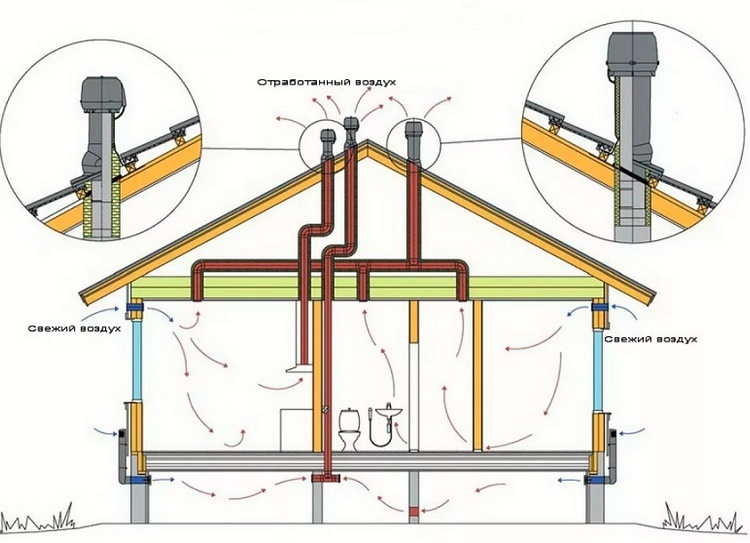
For normal operation of a gravity-type system, it is desirable that the air ducts have as few turns as possible. It is recommended to install turbine deflectors on the exhaust pipes that rise above the roof - they will increase the outflow
Installation steps:
- Ventilation design.
- Purchase of equipment: sewer pipes, assembly products, fasteners, fittings, assembly metal tapes.
- Installation of brackets and clamps in the places where ventilation lines follow.
- A ventilation riser is assembled from large pipes.
- Assembly and installation of air ducts.
- Connecting all branches to each other.
- Sealing connections. There is no particular need for this, but it will not hurt.
- Installation of fans and valves, if provided.
- Installation of ventilation flaps.
The finish of all types of installation work is testing the system for operability. All actions are to check traction. To do this, attach a piece of paper or napkin to the exhaust ducts.
Design or development of a circuit
The creation of a ventilation project begins with elementary calculations and collection of information, then:
- Calculate the rate of air exchange throughout the house. This indicator depends on the volume of all premises, their purpose and the number of residents. In living rooms, the air must be completely replaced once every 1 hour, and in technical rooms (toilet / bath) - at least 3 times in 1 hour. Adding the resulting figures, we get a performance indicator, taking into account which the diameter and height of the ventilation equipment will be selected.
- Draw a diagram of the movement of air currents. Immediately estimate the position of the suction and supply ducts.
- Draw a duct diagram. For now, ignore the detail, stick to the rules and try to fit the system without complicating the design. This is the most difficult stage of the work. It is not so easy to hide ventilation from bulky plastic pipes.
The sketches are ready. Consider for some time what devices you will have introduced into the system and where they will be located.
Detailing and assembly of the system
Having solved all the questions on the scheme and giving it a final look, it's time to move on to detailing.
First, calculations are also carried out, the components of the system, equipment are selected and the budget is reduced, then:
- The cross section is calculated and duct area. The maximum speed of quiet air movement is taken into account - otherwise there will be a hum in the house.
- All dimensions are transferred to the diagram.
- Detailing. A list of all the necessary elements is compiled with an indication of the cross-sections.
- The total cost of the ventilation system components is calculated. Reduce your desires to the available budget. At this stage, you will have to change the components several times, abandoning the desired in favor of the real.
- The final project is drawn. Do not forget about the nodes of passage of ventilation channels through the roof, ceiling, walls, insulating and consumable materials, ventilation grilles, fasteners and all other little things that will eventually result in a decent the amount.
It remains to find, buy and install. Not much has been written, but it will take a lot of nerves, time and effort to implement the plan. Having assembled the entire system, it is still impossible to say that everything is ready.
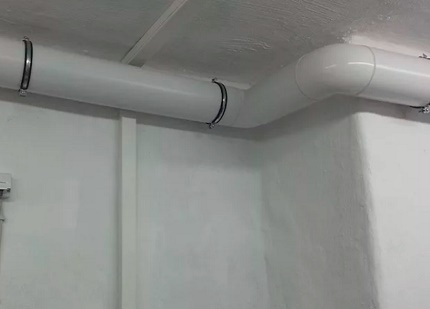
The air ducts from the sewer pipes are assembled in accordance with the drawn up project. PP pipes and fittings are joined by butt soldering, PVC - by cold welding
The ventilation system made of plastic sewer pipes still needs to be tested and refined during operation. It is also not so easy to achieve the coordinated operation of each element of the system. If the natural ventilation option is not effective enough, it is worth upgrading by installing exhaust valves or their supply counterparts.
Analysis of rumors and conjectures
Hearing: Plastic sewer pipes, when used in the supply ventilation system, will emit harmful, and maybe poisonous substances, poisoning the air. They also have a different purpose and harmful chemicals can be used in production. Therefore, when arranging a ventilation system, it is better not to risk it.
All, without exception, manufacturers of sewer waste pipes have documentation confirming environmental safety. It is impossible to refute or confirm this, since the production technology is kept secret. The manufacturer can acquaint you with the quality certificate for their product.
Hearing: Sellers air ducts made of polymers disseminate information, they say, sewer pipes quickly electrify, which leads to the adhesion of dirt and dust on the inner surface of the pipes.
Air movement can indeed create an electrical static charge inside the pipe. It is strange why everyone is talking about fan-made products, because tin pipes are also electrified. It's all about processing.
Manufacturers of plastic air ducts must perform antistatic treatment. If you treat the sewer plastic pipes with an antistatic agent before installation, the electrification property will disappear.
Conclusions and useful video on the topic
The following video will acquaint you with errors in the construction of an exhaust from sewer pipes and ways to correct deficiencies:
Effective ventilation in a private house from sewer pipes is a very realistic option. The advantages and disadvantages of such systems differ little from specialized ones, as evidenced by the operational characteristics. However, only the gravitational type can be made of them.
It is worth mentioning the dimensions. All fastening and connecting fittings, bends and bends will be 2 times larger than those of the ventilation competitors. The appearance is also not up to par. Conclusions are made, and then it's up to you, which is more important, the final cost of the product or the compactness and appearance.
You can share your own experience in the device of ventilation from sewer polymer pipes in the block below. Write, comments, please ask questions, post photos on the topic of the article. it is possible that your recommendations will be very useful to site visitors.
